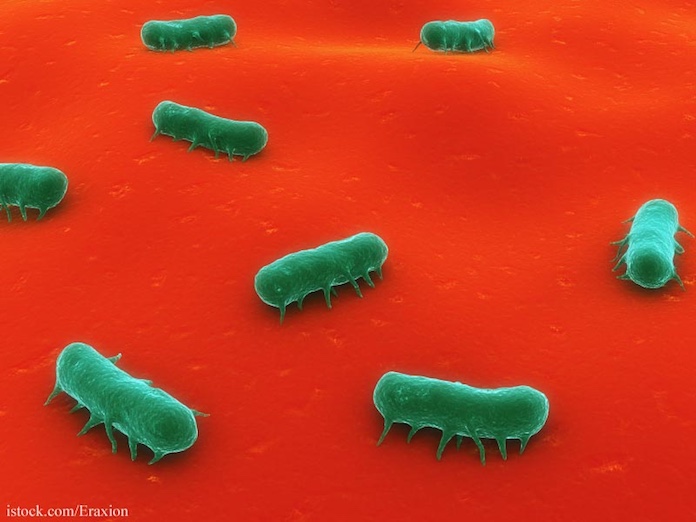The Public Health Agency of Canada has announced a Salmonella outbreak in that country that is linked to frozen, breaded raw chicken products. Is this outbreak related to the four Salmonella illnesses in Minnesota and Wisconsin that are linked to Ruby’s Pantry pop-up outlets? That outbreak is linked to frozen, raw, breaded chicken products that were sold without instruction labels.

In Canada, there are 59 people sickened in this Salmonella outbreak. The case count by province is: British Columbia (6), Alberta (8), Manitoba (9), Ontario (14), Quebec (19), New Brunswick (1), Nova Scotia (1), and Newfoundland and Labrador (1). Ten people have been hospitalized and no deaths have been reported. Illness onset dates range from March to May 20108.
Several people sickened in this Salmonella outbreak have eaten No Name brand chicken burgers before they got sick. And a food sample of No Name brand Chicken Burgers tested positive for Salmonella Enteritidis. The positive sample had the same genetic fingerprint, using whole genome sequencing (WGS) as the isolates taken from patients.
The Canadian Food Inspection Agency has issued a food recall warning for that product. It is possible that more products will be linked to this outbreak and officials will update the public health notice.
Food safety lawyer Fred Pritzker, an attorney who has represented many clients in Salmonella lawsuits said, “Chicken is often contaminated with Salmonella. Even though this is a fact, officials tell people to carefully cook any type of chicken product to make sure pathogens are destroyed.”
While anyone can get sick from a Salmonella infection, those most at risk for serious complications include children, infants, the elderly, and anyone with a chronic illness or compromised immune system. The symptoms of a Salmonella infection include fever, abdominal and stomach cramps, nausea, vomiting, and diarrhea that may be bloody.
These types of foods look like they are fully cooked, but they are raw. They are only safe to eat when cooked to 165°F, as measured with a food thermometer. Never cook these products in the microwave oven, since that appliance can leave cold spots where bacteria can grow.
Another issue with these products is that the breading may be contaminated with pathogenic bacteria, and it can fall off the product before the food is cooked. That means the crumbs could cross-contaminate kitchen surfaces, utensils, plates, and people. Be aware of any surfaces these products may have touched, and be sure to clean the kitchen with soap and water when you are done cooking.




